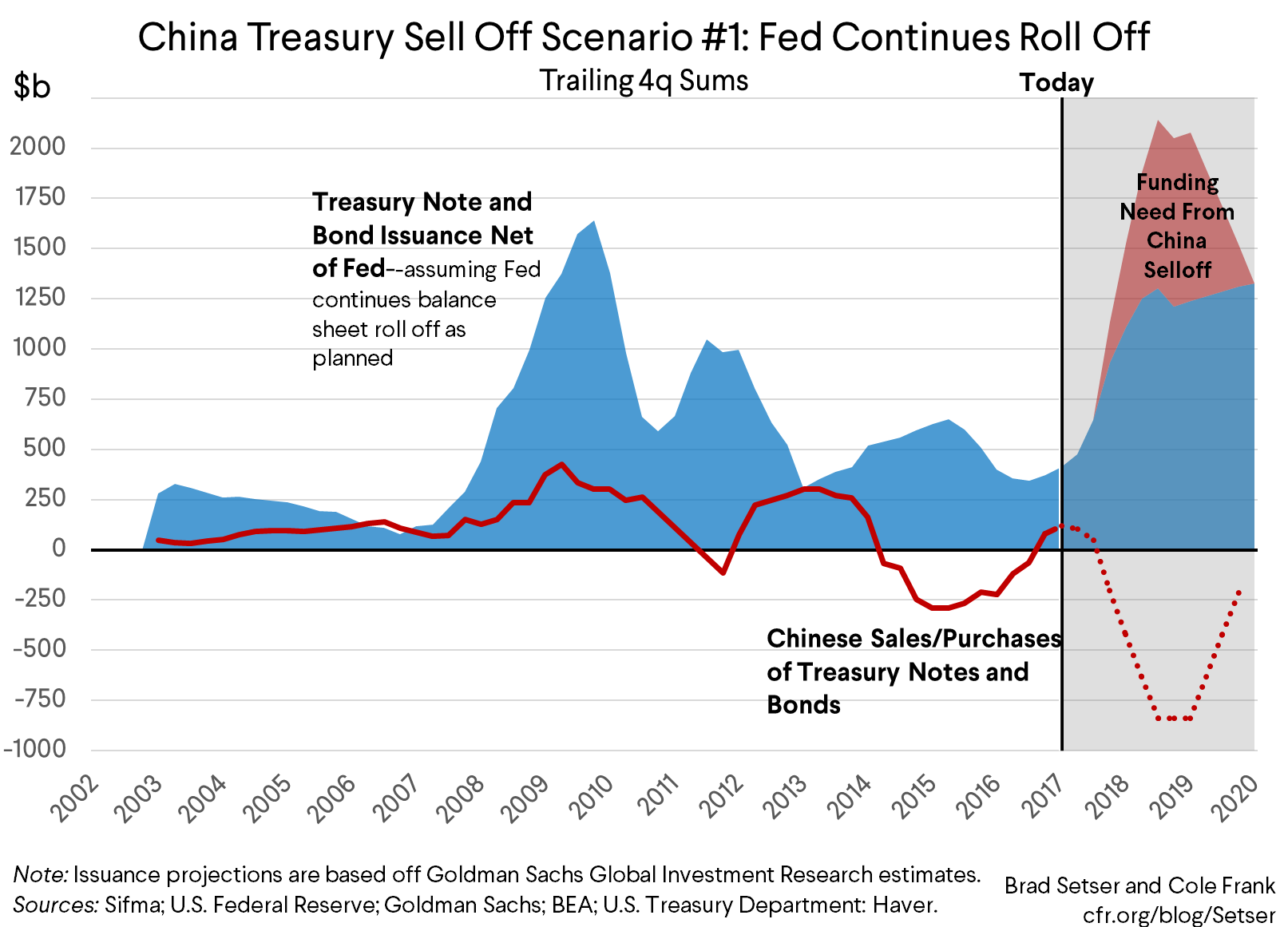
The Chinese bond market is resisting the trend in global sell-offs
Every time a major sell-off ripples through global markets, as it did recently when the yield on benchmark 10-year US Treasury bonds shot up 17 basis points to its highest level since April 2011, the turmoil quickly gives way to a renewed rally.
This time around, however, the forces pushing up bond yields are gaining momentum. Not only is the United States’ economy firing on all cylinders, prompting the Federal Reserve to signal that it is likely to tighten monetary policy more aggressively next year than markets anticipated, the European Central Bank is terminating its quantitative easing program in December and is expected to slowly begin raising interest rates next year.
According to data from JPMorgan, the balance sheets of the world’s three main central banks, the Fed, the ECB and the Bank of Japan, will contract next year for the first time since the 2008 financial crisis. With ultra-loose monetary policies having played an instrumental role in driving down bond yields, the withdrawal of central banks from markets is likely to finish off the bond bull market once and for all.
This year alone, the 10-year Treasury yield has surged 80 basis points, with half the increase occurring since the end of August. Its German equivalent, meanwhile, is up 30 basis points since the end of May. Even Japan’s 10-year yield, which was almost in negative territory as recently as July, has hit its highest level since January 2016.
Yet in China’s onshore debt market, the world’s third-largest, different forces are at play.
A combination of idiosyncratic and policy-driven factors is insulating China’s bond market from the upwards pressure on global yields. These factors include an almost entirely domestically owned market with very low correlations with both US and emerging-market local currency bonds, and increasing divergence between Chinese and US monetary policy – particularly since Beijing shifted to more growth-supportive measures in July to help offset the impact of rising American tariffs.
The facts speak for themselves. While the average yield on JPMorgan’s benchmark index for emerging-market local currency debt has risen more than 60 basis points this year, to 6.76%, China’s 10-year yield had fallen nearly 30 basis points to 3.65%, only 40 basis points above its American equivalent, by the time markets closed ahead of the recent national holiday.
The fall in borrowing costs has been much sharper at the policy-sensitive short end of the curve. The recent shift at the People’s Bank of China towards liquidity injections has brought about a dramatic decline in interbank lending rates, with the one-month Shanghai Interbank Offered Rate dropping from nearly 5% at the start of this year to 2.8% just recently.
Lower funding costs have helped revive corporate debt sales, with Chinese companies issuing 2.3 trillion yuan in the third quarter, the most in two years, according to Bloomberg, just as bond sales in other emerging markets have ground to a halt.
Looser monetary policy, the PBOC has just cut the reserve requirement ratio for certain banks for the fourth time this year, sending a stronger easing signal, is being implemented just when onshore bonds are being made more accessible to foreigners ahead of China’s inclusion in the Bloomberg Barclays Global Aggregate Index, the leading global bond gauge, next April.
According to the latest data from JPMorgan, foreign inflows into China’s onshore bond market have surged to more than 80 billion USD since the beginning of this year. This contrasts markedly with the outflows from the local currency debt markets of India, Malaysia and Indonesia, where correlations with US bonds are higher, especially in the latter two economies where foreigners own between 25 and 40 per cent of domestic debt.
Ashmore, an asset manager focused on developing economies, argues that Chinese bonds are a “safe haven” within emerging markets, proving much less volatile than other developing nations’ local bonds, which “flies in the face of the hysteria which often surrounds China’s financial markets”.
That the onshore bond market has enjoyed a surge in foreign inflows in the face of this year’s sharp fall in the yuan is the strongest indication that overseas investors remain sanguine about the outlook for the currency. At a time when global bond yields are rising, international debt funds see a weaker yuan as part of a looser monetary stance that benefits bonds and eases concerns about financial deleveraging.
The real test, however, will come when the liberalisation of the onshore bond market lifts the share of foreign ownership significantly above the current level of 2%, making China more vulnerable to shifts in US and emerging-market debt markets.
For the time being, China is bucking the sell-off in global bonds.
